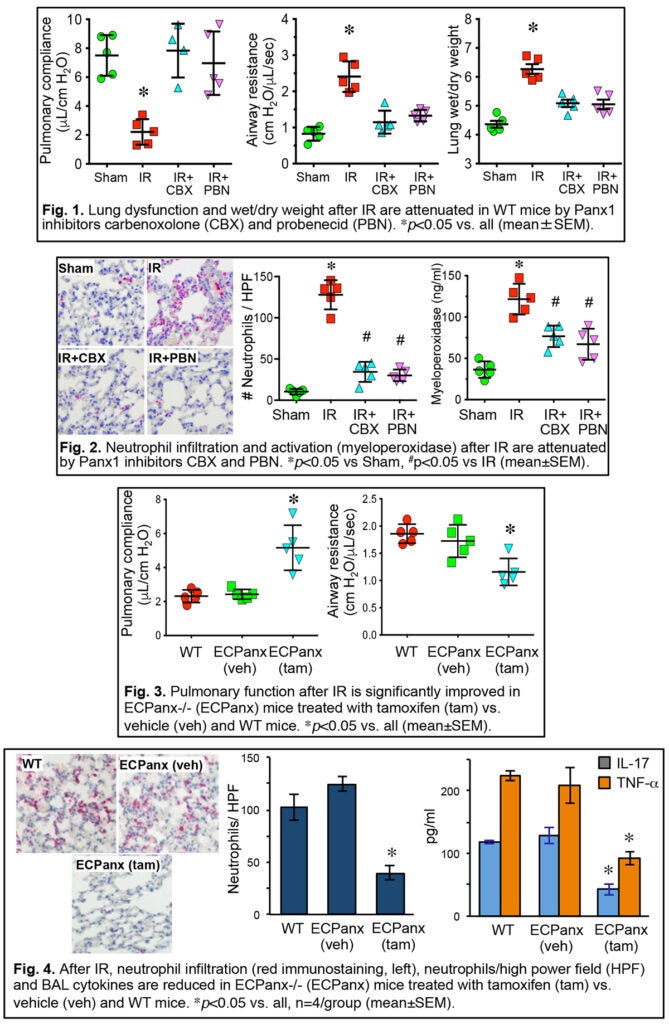Panx1 and eATP
About
Extracellular ATP (eATP), which accumulates after acute lung injury such as ischemia-reperfusion injury (IRI), is an important inflammatory signaling molecule, serving as a danger signal that induces infiltration of immune cells that promotes injury. ATP signals through binding of purinergic P2 receptors. Although ATP signaling has been extensively studied, its source and the cellular mechanisms for its regulated release during IRI have not been elucidated. A plethora of recent studies demonstrate that ATP can be actively released through pannexin-1 (Panx1) channel, which are highly expressed in vascular tissue among others. To date, the primary function ascribed to Panx1 is the release of ATP, and as a result Panx1 is a strong candidate for vascular ATP release during lung IRI.
Studies in our lab demonstrate that Panx1 inhibitors significantly improve lung function, reduce edema and attenuate neutrophil infiltration (Figures 1-2). Mice with a tomoxifen-inducible, selective knockout of Panx1 in vascular endothelium are significantly protected from lung IRI (Figures 3-4). These data suggest that Panx1 signaling by the vascular endothelium is an important mediator of lung IRI. Thus our current NIH-funded project aims to determine the role of Panx1-derived ATP and purinergic signaling in endothelial barrier dysfunction and vascular inflammation during lung IRI. Our approach utilizes unique, cell-specific Panx1 deficient mice in models of lung IRI and transplantation, pharmacologic strategies, and in vitro studies.
This study has recently been published: Sharma AK, Charles EJ, Zhao Y, Narahari AK, Baderdinni PK, Good ME, Lorenz UM, Kron IL, Bayliss DA, Ravichandran KS, Isakson BE, Laubach VE. Pannexin-1 channels on endothelial cells mediate vascular inflammation during lung ischemia-reperfusion injury. Am J Physiol Lung Cell Mol Physiol 315(2):L301-L312, 2018.

